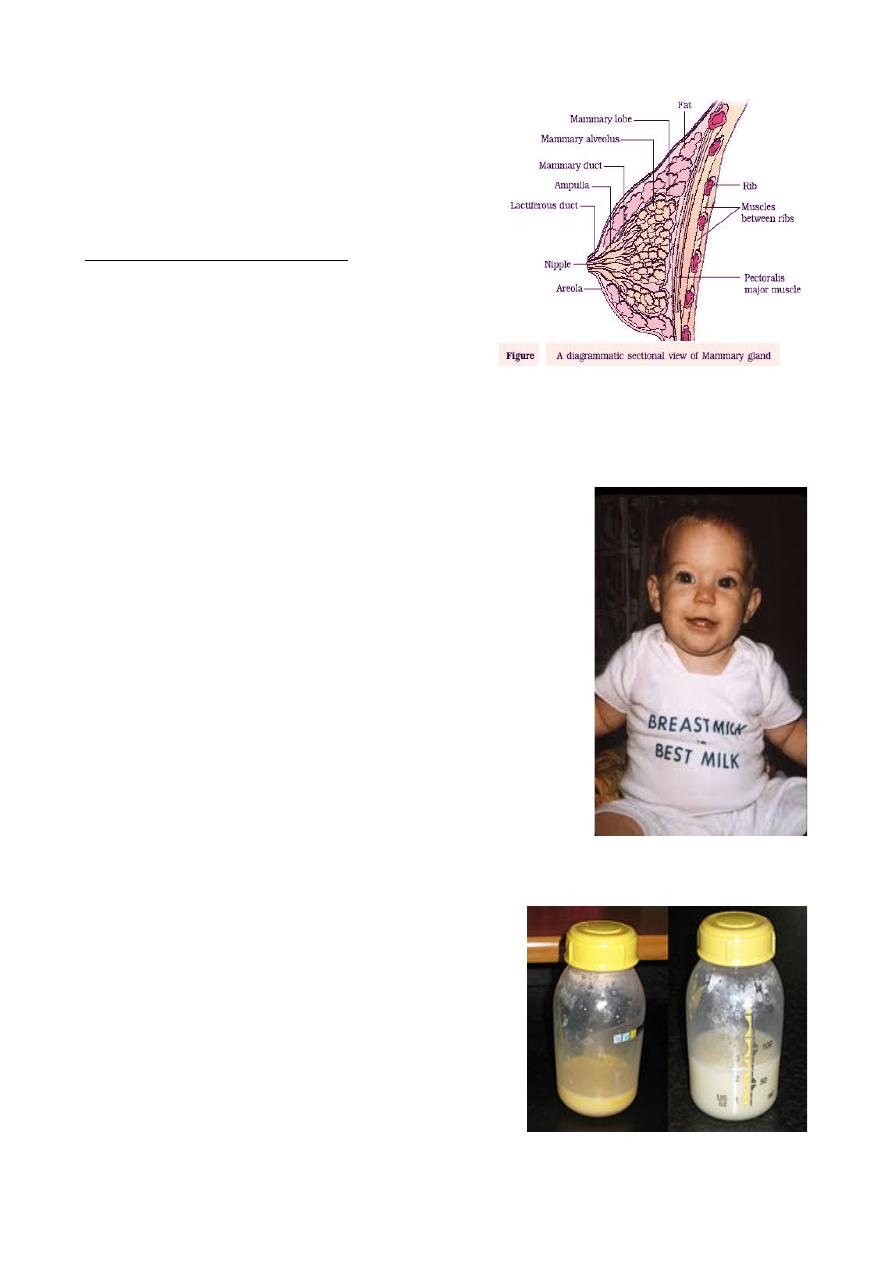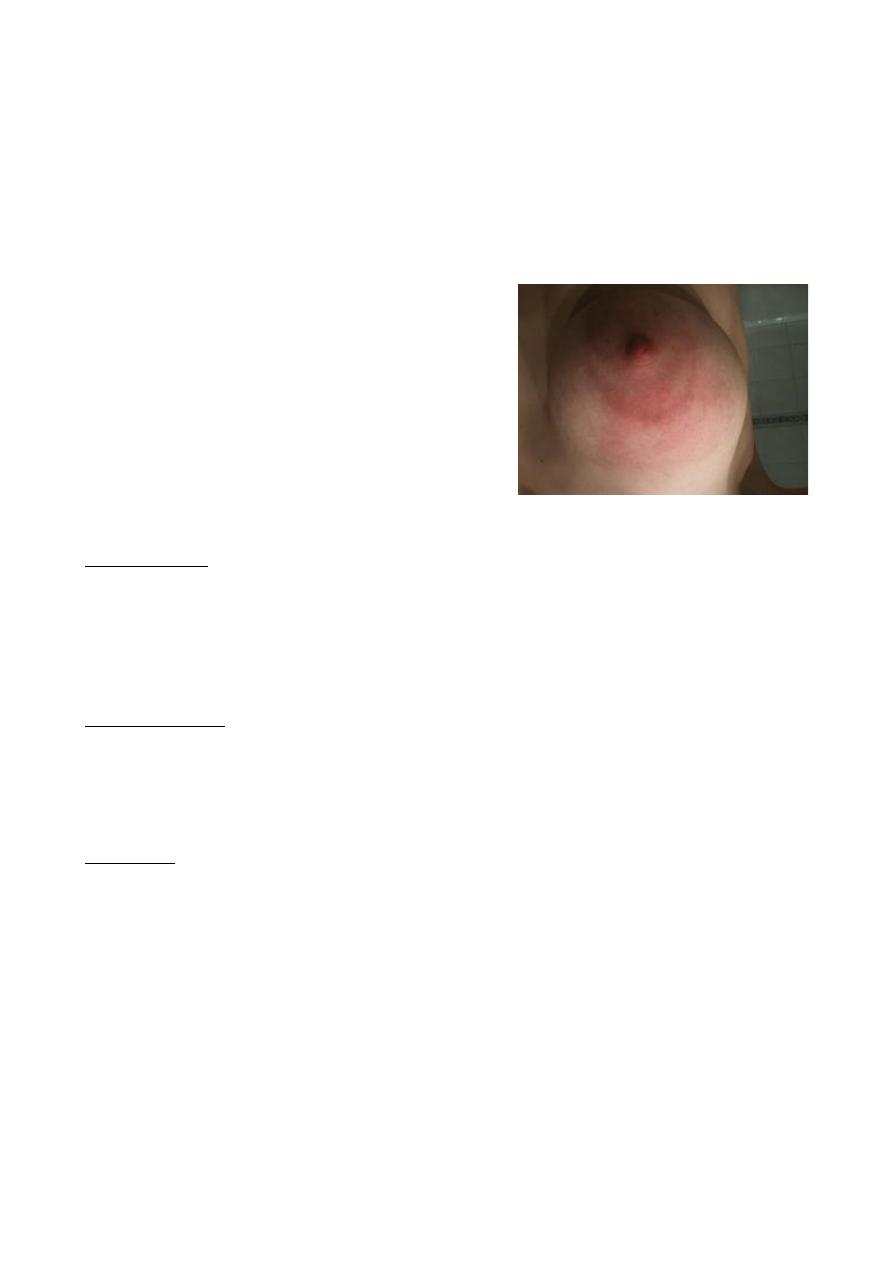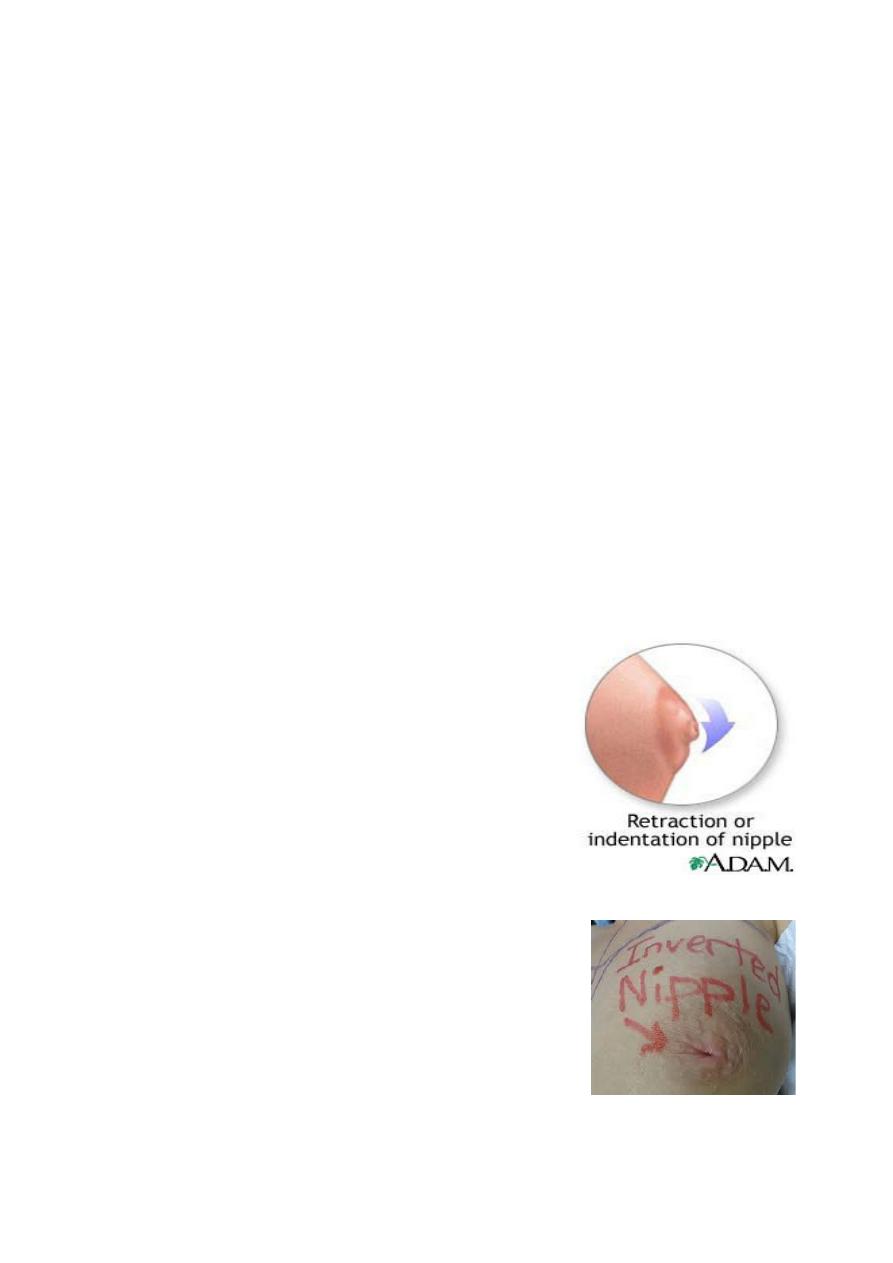
Nutrition
Dr. Mohamed
“ Breast Feeding ”
Total Lec: 31


1
DR. MOHAMMAD F. IBRAHEEM
DEPARTMENT OF PEDIATRICS (1)
INFANT FEEDING
Objective
The basic goals of feeding.
Physiology of lactation.
What is the Colostrum?
Advantages, Contraindications and problems associated with breast feeding.
Problems affect successful breast feeding.
The Factors that conductive to successful breast-feeding
•The dramatic growth of infants during the first year of life and continued
growth, even thought at lower rates, from one yr. of age through adolescence
impose unique nutritional needs.
•Because the rapid rates of growth are accompanied by marked developmental
changes in organ function and composition, failure to provide sufficient
nutrients during this time is likely to have adverse effects on development as
well as growth.
Infant feeding
Proper nutrition is crucial in promoting the normal growth & development of
children.
The basic goals are:
(1) satisfying growth.
(2) Avoidance of deficiency status.
Breast feeding
Formation, ejection & secretion of milk is affected by different hormones in the
body: - Thyroid hormones, insulin, adrenal steroids & pancreatic enzymes.
Suckling will affect the hypothalamus through the auditory, visual & emotional
stimuli.
Physiology of lactation:
Lactation consists of two distinct phases:
First Humeral phase: The secretion of milk by the alveolar cells into the alveoli
& this begins in the last 3 months of pregnancy & continue after that. Here

2
Prolactin secretion is increased and affects
the milk secretion and further more the
suckling mechanism will increase the
prolactin by 10 folds.
Second Neurohumeral phase:
It is the process of milk ejection whereby
the alveolar milk is ejected from the
alveoli into the lactiferous ducts and then
to the lactiferous sinuses so that it will be
readily available to the infant (the let down reflex)
and it is due to the contraction of the myoepithelium that envelops the alveoli.
This is caused by combination of neuorogenic & hormonal mechanism involving
the Oxytocin hormone and to lesser extent Vasopressin.
v
The release of Oxytocin is stimulated not only
by suckling mechanism but also by condition
reflex when the hungry infants start to cry!
v
The milk ejection reflex is inhibited by: Pain
from cracked nipple, anxiety, physical exertion,
previous breast surgery and smoking.
The AAP recommends
Exclusive breast-feeding for a minimum of 4 mo and
preferably for 6 mo.
It is preferable to empty the 1st breast before offering
the 2nd in order to allow complete emptying and
therefore better milk production. Follow-up appointment is recommended
within 24-48 hr after hospital discharge.
Colostrum:
(1)The earliest milk to be secreted, the daily
volume is only 10-40 ml/day and it is sufficient
to the newborn baby.
(2) ) It is lemon color, thick, sticky, alkaline,
with high sp. Gravity (1.040-1.060).
(3) It is very rich in proteins, vit. A and Nacl.

3
(4) But less amounts of fat, CHO (as lactose), and potassium.
(5) contains high concentrations of leukocytes, which can destroy disease-
causing bacteria and viruses.
(6) It has unique immunological factors such as : IgA ,IgG ,IgM , lysosomes and
lactoferrin.
(7) It has a mild laxative effect, encouraging the passing of the baby's first stool,
which is called meconium.
Problems associated with breast feeding
1-Nipple Pain
Nipple pain is one of the most common complaints of breastfeeding mothers in
the immediate postpartum period. Poor infant positioning and improper latch
are the most common reasons. If the problem persists and the infant refuses to
feed, consideration needs to be given to nipple candidiasis.
2-Engorgement
The breasts are firm, overfilled, and painful. the cause may be incomplete
removal of milk. Frequent breastfeeding or, in some cases, with a combination
of hot compresses and manual milk expression before breast Feeding.
3-Mastitis
2-3% of lactating, (u) unilateral,
C/F: localized warmth, tenderness, edema, and erythema after the 2nd post-
delivery week.
m.o:
Staph. aureus
,
E.coli
, group A strept ,
H. influenzae
,
Klebsiella
pneumoniae
, and
Bacteroides
spp.
Diagnosis is confirmed by physical examination.
Oral antibiotics and analgesics,
While promoting breast-feeding or emptying of the affected breast

4
4-Milk Leakage
Common event. Milk is involuntarily lost from the breast either in response to
breast-feeding on the opposite side or as a reflex in response to other stimuli,
Such as an infant’s cry. Milk leakage usually resolves spontaneously as lactation
proceeds.
5-Inadequate Milk Intake
May be due to:-
1- Insufficient milk production or
2- Failure of established breast-feeding,
But also fetal cause that prevent proper breast stimulation.
Breast-fed neonates must feed a minimum of 8 times per day.
6- Jaundice
Breast-feeding jaundice is a common reason for hospital readmission of healthy
breast-fed infants.
Breast milk jaundice causes persistently high serum indirect bilirubin in a
thriving healthy baby.
v
Exclusive breast feeding --------nothing added to the breast milk.
v
Almost exclusive B .F.----------addition of water & juice (>4m)
v
Partial breast feeding ------------only 20-80% of breast feeding.
v
Token breast feeding ------------ <20 % of BF
• Lactating woman supplies 800-850 ml/day of milk which is equal to
energy loss of 600 kcal the diet of a lactating woman should be rich in
minerals, protein and vitamins.
Advantages of Breast Feeding:
1- Breast milk is the natural food for full-term infants and is the appropriate
milk for the 1st year of life.
2- Easier, safer, cheaper and readily available.
3- It is fresh and free of contaminating bacteria.
4-Breast-feeding is associated with fewer feeding difficulties incident to allergy
and/or intolerance to bovine milk; these include diarrhea, intestinal bleeding,
occult melena, “spitting up,” colic, and atopic eczema.
5-Breast-fed infants also appear to have a lower frequency of certain allergic
and chronic diseases in later life than formula-fed infants.
6-Emotionaly satisfactory for the mother and it gives feeling of security to the
baby.

5
7-Antimicrobial property as:
(a) Antibodies (Ig against bacteria & viruses) and relatively high conc. of
secretory IgA.
(b) Phagocytic cells (granulocyte: macrophage, lymphocytes, 90% of which
are T- lymphocytes).
(c) Enzymes (lysozyme, lacto-peroxidase).
(d) Proteins (lactoferrin, the iron –binding whey protein which inhibits the
growth of
E.coli
).
(e) Resistant factors against staphylococci and bile salt- stimulated lipase
kills
Giardia lamblia and
E.histolytica
.
(f) The lower pH of the stool of breast-fed infants is thought to contribute
to the favorable intestinal flora of infants fed human milk compared with
formula (more bifidobacteria and lactobacilli; fewer
Escherichia coli
).
(g) Complements.
(i) Interferon-producing cells.
Contraindications of breast feeding:
Most of them are temporary.
In mother:
1-Severe systemic diseases as acute heart failure, thyrotoxicosis, neoplasia
&receiving cytotoxic therapy.
2-HIV, Cytomegalovirus (CMV), human T-cell lymphotropic virus type 1, rubella
virus, and herpes simplex virus have also been demonstrated in breast milk.
3-Acute infections as Active TB (this may be managed by treating the mother
with anti TB treatment and giving the baby INH resistant BCG).
4-Septicemia, malaria, acute typhoid & local bilateral breast abscesses.
5- Insanity & uncontrolled epilepsy.
6-Severely inverted nipples not responding to local treatment.
In the baby:
1-Inborn error of metabolism (like Galactosemia, Primary disaccharidase
deficiency & phenylketonuria).
2-Severe physical abnormalities as bilateral cleft palate & cleft lip.
3-Weak and premature infants.
4-Cerebral anoxia.
5-Severe dyspnea as RDS& HF.

6
v
Milk from the mother whose diet is sufficient and properly balanced will
supply all the necessary nutrients except fluoride and vitamin D.
v
The vitamin D intake should be 400 IU/day, starting in the first few Days
of life for all breast-fed infants.(AAP 2008)
v
The iron content of human milk is low, but most normal term infants have
sufficient iron stores for the 1st 4–6 mo of life. Human milk iron is well
absorbed. Nonetheless, by 4–6 mo of age, the breast-fed infant's diet
should be supplemented with iron-fortified complementary foods and/or a
ferrous iron preparation.
v
The vitamin K content of human milk also is low and may contribute to
hemorrhagic disease of the newborn. Parenteral administration of 1 mg of
vitamin K at birth is recommended for all infants, and this is especially
important for those who will be breast-fed.
PROBLEMS AFFECT SUCCESFUL BREAST FEEDING
1-Retracted nipples
Usually benefit from daily manual breast-pump
suction during the latter weeks of pregnancy.
2- Truly inverted nipples
May be helped by the use of milk cups, starting as
early as the 3rd month of pregnancy.
3-Weight gain
If the mother's diet is adequate, she need not gain or
lose weight while breast-feeding. Nursing will help
the uterus return to its normal size sooner and also
may help the mother return to her pre-pregnancy weight sooner.

7
4- Breast size
Many women must be reassured that breast tone will be preserved by the use
of a properly fitted brassiere to support the breasts, especially before delivery
and during the nursing period. Breast-feeding has no long-term adverse
cosmetic effects on the breast appearance.
Q- Is it necessary to stop breast feeding in pregnant mother?
A-Pregnancy does not necessitate immediate cessation of nursing, but the
combined demands of supplying milk to the infant and supplying nutrients to
the developing fetus are formidable, necessitating special attention to maternal
nutrition.
Q- What are the Factors that conducive to successful breast-
feeding?
1- Good nutritional health.
2- Proper balance of rest and exercise.
3- Freedom from worry.
4- Early and sufficient treatment of any intercurrent disease.
5- and adequate nutrition.
Summary
• Proper nutrition is crucial in promoting the normal growth &
development.
• Colostrum is the earliest milk to be secreted It is lemon color,
thick, sticky, rich in proteins but less amounts of fat & CHO.
• Advantages of Breast Feeding could be summarized as:- Easier ,
safer, fewer feeding difficulties ,emotional satisfaction and
antimicrobial property.
• Assessing and managing the problems that affect successful
breast feeding
THANK YOU
